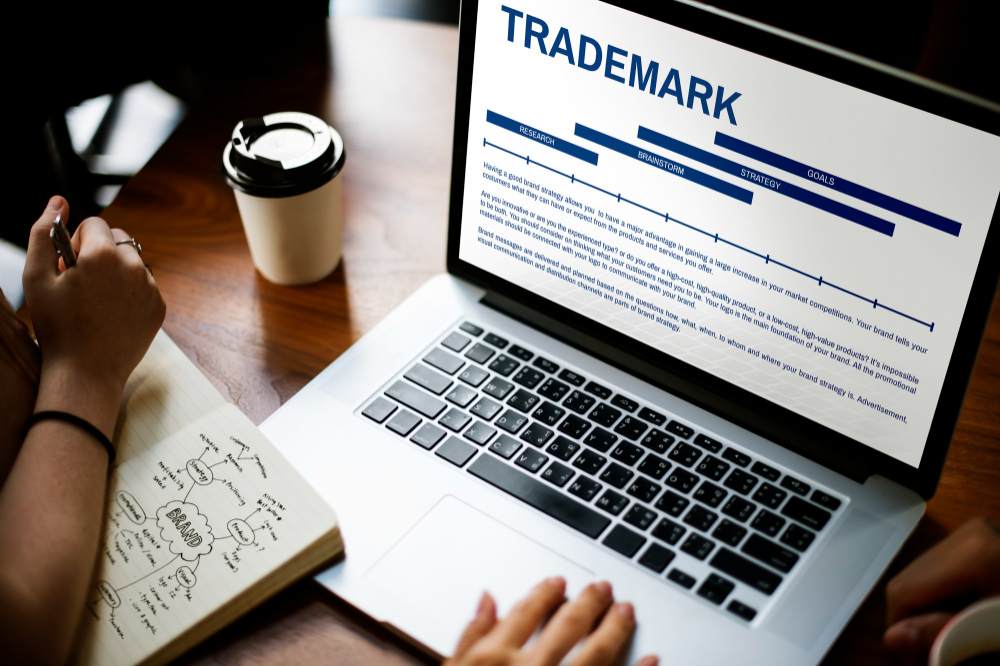HOW TO RESPOND TO A TRADEMARK OBJECTION (WITH EXAMPLE REPLY)
By SolvLegal Team

INTRODUCTION
Seeing a brand name appear on the IP India website after a trademark application is filed often brings a sense of satisfaction. It signals that the brand has formally entered the system and is one step closer to recognition. That sense of progress, however, can quickly fade when the application status changes to “Objected.”
A trademark objection is not a rejection. It simply indicates that the Examiner requires further clarification before the mark can be accepted for advertisement. In essence, it is an opportunity for the applicant to demonstrate that the mark deserves registration under the Trade Marks Act, 1999.
The reply to the trademark objection becomes the turning point that decides whether the application proceeds or remains pending. By the end, the discussion aims to provide a clear understanding of how a well-prepared reply can convert a trademark objection into a strong case for registration.
For businesses navigating this stage of the trademark process, SolvLegal offers resources designed to simplify it.
UNDERSTANDING WHAT THE LAW SAYS
Trademark objections are generally raised under Section 9 or Section 11 of the Trade Marks Act, 1999.
Section 9 (Absolute Grounds) applies when the Examiner believes the mark is descriptive, generic, or lacks distinctiveness. For example, a mark like “Fresh Bread” for bakery products may be objected to as directly describing the goods.
Section 11 Relative Grounds) applies when the mark appears similar to an already registered or pending mark, leading to a likelihood of confusion among consumers.
Other procedural or technical objections may also arise, such as an unsigned Power of Attorney, incomplete class description, or missing documents. These are easily rectifiable.
Understanding which ground applies is essential, because the tone and structure of your reply will depend entirely on it.
1. Preliminary Background
Every well-drafted reply begins with a concise background that introduces the mark, identifies the applicant, and summarises the objection raised in the Examination Report. This section should state the application number, class, and filing details, and clarify whether the objection falls under Section 9, Section 11, or both.
The objective here is to show that the applicant understands the precise nature of the objection and is responding with relevance, not using a generic format. Mention the nature of the mark whether it is invented, arbitrary, or derived from descriptive elements and specify the goods or services it represents.
If the mark has already been used, include the date of first use, the manner in which it has been applied (for example, on packaging, advertising, or digital media), and the geographical extent of its use. This section should establish the applicant’s credibility and signal to the Examiner that the reply is grounded in fact.
2. Distinction Between the Marks (Section 11 Objection)
When the objection is raised under Section 11(1) of the Trade Marks Act, 1999, it generally means the Examiner has found the applied-for mark to be identical or deceptively similar to an existing registration.
This portion of the reply should focus on demonstrating that no likelihood of confusion exists. The explanation should cover three key dimensions: visual appearance, phonetic sound, and conceptual meaning. Describe how the overall structure, pronunciation, and impression of the applicant’s mark differ from the cited one.
In addition, highlight factual distinctions that matter in trade. For instance, if the marks relate to different types of products, target distinct consumer segments, or operate through different channels of sale, those distinctions should be made explicit. Mention price points, trade circles, and consumer demographics, as this helps demonstrate that the two marks occupy separate commercial spaces.
Attach relevant evidence such as product catalogues, invoices, website screenshots, and other documents that visually show the difference. Each document should be numbered as an annexure and referenced precisely within the body of the reply.
This section is where the “no confusion” argument is built. The tone should remain factual and persuasive, avoiding overstatements or speculation.
3. Distinctiveness and Use (Section 9 Objection)
An objection under Section 9(1) arises when the Examiner believes the mark is descriptive, generic, or not capable of distinguishing the applicant’s goods or services. This part of the reply should explain why the mark qualifies for protection despite that belief.
If the mark is inherently distinctive, describe what makes it so for example, that it is a coined or arbitrary term with no direct reference to the goods.
If the mark has acquired distinctiveness through continuous use, the reply should include evidence of long-standing and exclusive use in commerce. Relevant proof can include:
· Dated invoices showing actual sales under the mark
· Copies of advertisements or promotional campaigns
· Social media screenshots or website listings featuring the mark
· Marketing and advertising expenditure summaries
· Press mentions or customer recognition evidence
· An affidavit or declaration of use confirming these details
· This section should move beyond adjectives like well-known or popular and instead rely on data and documents that show the mark’s established market presence. When evidence is credible and dated, it speaks far more effectively than narrative claims.
4. Honest and Concurrent Use
Even if some similarity exists between the applicant’s mark and another on record, the Registrar may still grant registration if honest concurrent use can be shown, as recognised under Section 12 of the Trade Marks Act, 1999.
This part of the reply should explain that the mark has been adopted and used honestly, continuously, and without confusion for a substantial period. It helps to mention years of use, the scale of operations, and the fact that no legal opposition, objection, or confusion has been reported from other proprietors.
Supporting material such as dated invoices, trade catalogues, or advertisements should be enclosed to establish real market use. Demonstrating that two marks have coexisted peacefully in commerce often persuades the Registry to exercise its discretion in favour of the applicant.
This section introduces an element of equity into the legal reasoning showing that, in practice, coexistence has not led to confusion or deception.
5. Legal Principles
The reply should include a short reference to key legal principles and case law that align with the applicant’s position. The idea is not to list authorities exhaustively, but to ground the arguments in established judicial reasoning.
Indian courts have repeatedly held that trademarks must be compared as a whole and not dissected into individual parts. Minor similarities are not sufficient to conclude deceptive resemblance. Cases such as F. Hoffmann-La Roche v Geoffrey Manners (AIR 1970 SC 2062) and ITC Ltd v Nestle India Ltd (2019 (77) PTC 222 (Del)) affirm that the overall impression of the marks in the marketplace is what matters most.
Referencing one or two such judgments demonstrates legal understanding and shows that the arguments in the reply are consistent with settled law.
6. Prayer and Verification
The reply should conclude with a formal prayer requesting the withdrawal of the objection and the acceptance of the application for advertisement under Section 20 of the Trade Marks Act, 1999. The language should be courteous and precise.
After the prayer, a verification clause should confirm that the statements made are true to the best of the applicant’s knowledge and belief. This must be followed by the date, place, and the signature of the authorised advocate or applicant.
UNDERSTANDING THE STRUCTURE OF AN EFFECTIVE REPLY
A reply like this works because it covers the Registry’s three core questions:
First, does the applicant understand the grounds of objection?
The introduction answers that clearly, referencing both Section 9 and Section 11 and acknowledging the cited mark.
Second, is there factual and evidentiary support?
Every factual statement links to a numbered annexure. The Examiner can verify instead of guessing.
Third, is the tone professional and persuasive?
The reply respects the Registry’s role. It’s confident, not combative, and it avoids filler phrases like “it is humbly submitted.”
This blend of precision, respect and evidence is what separates an accepted mark from a prolonged hearing.
LEGAL POINTS TO KEEP IN MIND WHILE DRAFTING
Always begin by restating what the Examiner has objected to, even if it feels obvious. It reflects that the issue has been understood correctly and helps the reply stay on point rather than wandering into unnecessary details.
Avoid relying on adjectives such as invented, unique or famous unless there is evidence to back them up. Words alone do not convince the Registry but documents do. If the reply mentions use since 2019, it should be supported by dated proof like an invoice, a catalogue or an advertisement from that year.
The length of the reply should match the depth of the objection. A brief report does not require an essay in response. The Registry looks for concise and reasoned explanations, not repetition or filler. Maintaining focus makes the document more persuasive and easier to read.
It is also important to ensure that the mark appearing in annexures is identical to the one filed in the application. Even a minor variation in spelling, font or presentation can give the Examiner reason to doubt continuity of use.
When citing case law, choose only those judgments that genuinely align with the facts. One relevant precedent carries far more weight than a long list of authorities cited for the sake of volume.
Finally, conclude with a short prayer and a proper verification. It adds completeness and procedural correctness to the document and signals that the submission is ready for consideration.
CONCLUSION
A trademark objection is not a setback; it is a natural part of the registration process. It gives the applicant a chance to demonstrate that the brand has a distinct identity and a legitimate presence in the market.
What usually convinces the Registry is not elaborate language or long submissions but structure, evidence, and clarity. A reply that focuses on facts, presents reasoning logically, and attaches the right supporting documents stands a far better chance of being accepted.
Every objection is, in a sense, an opportunity to make the application stronger. Investing time in a precise, well-reasoned response shows that the mark has real value and that its owner understands the responsibility of protecting it.
Approaching objections with this mindset turns what seems like a procedural hurdle into a practical step toward successful registration and long-term brand protection.
For tailored guidance or a review of an existing draft, visit SolvLegal.com to access practical templates and resources that simplify the trademark objection process.
ABOUT THE AUTHOR
This blog is authored by Shridansh Tripathi, a second-year law student at the Department of Legal Studies and Research, Barkatullah University, Bhopal.
REVIEWED BY, Gaurav Saxena a corporate lawyer focusing on company law, commercial agreements, and compliance strategy. He is the Founder of SolvLegal and a dual-degree professional with expertise in Law and Engineering. A graduate of the University of Lucknow, he has a deep understanding of Contract Law, Corporate Law, Intellectual Property Rights, Information Technology Law, and Data Privacy.
https://www.linkedin.com/in/gaurav-saxena-solvlegal/
DISCLAIMER
The information provided in this article is for general educational purposes and does not constitute legal advice. Readers are encouraged to seek professional counsel before acting on any information herein. SolvLegal and the author disclaims any liability arising from reliance on this content.





Leave a Comment